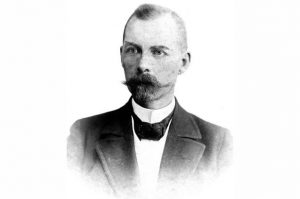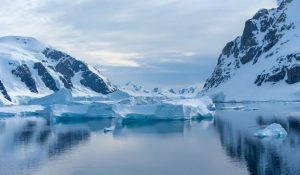 Music
Music  Music
Music  History
History 10 Less Than Jolly Events That Occurred on December 25
 Weird Stuff
Weird Stuff 10 Funny Ways That Researchers Overthink Christmas
 Politics
Politics 10 Political Scandals That Sent Crowds Into the Streets
 Weird Stuff
Weird Stuff Ten Bizarre Facts About The Doge Meme
 Our World
Our World 10 Ways Your Christmas Tree Is More Lit Than You Think
 Movies and TV
Movies and TV The 10 Coolest Stars to Set Sail on The Love Boat
 History
History 10 Things You Didn’t Know About the American National Anthem
 Technology
Technology Top 10 Everyday Tech Buzzwords That Hide a Darker Past
 Humans
Humans 10 Everyday Human Behaviors That Are Actually Survival Instincts
 Music
Music 10 Surprising Origin Stories of Your Favorite Holiday Songs
 History
History 10 Less Than Jolly Events That Occurred on December 25
 Weird Stuff
Weird Stuff 10 Funny Ways That Researchers Overthink Christmas
Who's Behind Listverse?

Jamie Frater
Head Editor
Jamie founded Listverse due to an insatiable desire to share fascinating, obscure, and bizarre facts. He has been a guest speaker on numerous national radio and television stations and is a five time published author.
More About Us Politics
Politics 10 Political Scandals That Sent Crowds Into the Streets
 Weird Stuff
Weird Stuff Ten Bizarre Facts About The Doge Meme
 Our World
Our World 10 Ways Your Christmas Tree Is More Lit Than You Think
 Movies and TV
Movies and TV The 10 Coolest Stars to Set Sail on The Love Boat
 History
History 10 Things You Didn’t Know About the American National Anthem
 Technology
Technology Top 10 Everyday Tech Buzzwords That Hide a Darker Past
 Humans
Humans 10 Everyday Human Behaviors That Are Actually Survival Instincts
10 Polar Adventurers Who Never Made It Back Home
The Arctic is a place that remains full of mystery, even now that we’ve managed to explore a good chunk of it. Adding to the mystery is the fact that many an explorer has gone missing or died while trying to traverse its frigid landscapes. Another area of intrepid exploration was the Antarctic. Whether searching for the North Pole, the South Pole, or the Northwest Passage, these men were driven by the promise of fame and the lure of discovery.
Here are 10 polar adventurers who never made it back home.
Related: 10 Of The World’s Last Unexplored Places
10 James Knight

James Knight was an 18th-century trader who worked for Hudson’s Bay Company. The company operated out of James Bay and Hudson Bay and did a lot of dealings with Canadian First Nations peoples from further north.
As part of his work, Knight himself had quite a bit of contact with these indigenous people and had heard them tell stories of a “yellow metal,” which James assumed to be gold. Now, this intrigued James, and he decided it would be a good idea to launch an expedition into the Canadian Arctic, from where these tribes hailed, to look for that gold.
Although James Knight was no spring chicken, at the age of 70, he outfitted two ships. He named them the Discovery and the Albany and set off from Gravesend to explore the Canadian Arctic. However, he never returned.
No one knew what had happened to James and his crew until around 1991 when divers discovered the wrecks of James’s ships at the bottom of Hudson Bay. Today, we still don’t know what happened to this Arctic explorer or why he disappeared so many years ago.[1]
9 John Franklin
John Franklin was an Englishman who entered the Royal Navy at the ripe young age of 14. During his time in the navy, he was part of several expeditions and eventually became fascinated with the Arctic. He even attempted an expedition in 1818 to reach the North Pole!
Sadly for John, however, this love of the Arctic would turn out to be ill-fated. In 1845, Franklin decided to launch an expedition to find the Northwest Passage through Canada. At first, the expedition seemed to be going well, and the crew stopped in Greenland to stock up on supplies just a few months after leaving England. That, however, would be the last anyone ever saw of them.
After departing Greenland, the expedition was neither heard of nor seen again. The British Navy set about trying to find Franklin and his 160-man crew and launched the biggest naval search in Britain to date. However, they didn’t find anything until 170 years later, when the shipwrecks of Franklin’s boats—the Terror and the Erebus—were found in Canadian Arctic waters.[2]
8 Eduard Von Toll

Eduard Von Toll was born in Estonia in 1858 and, from an early age, took a liking to the sciences. He went on to study mineralogy, zoology, and medicine at university and even went off on a research expedition in the Balearic Isles.
It seems that this first expedition got him inspired because, in 1900, Eduard took off on a Russian Polar Expedition to hunt for an island called Sannikov Land. While on his expedition, Eduard was set to study geology and geography, and he couldn’t have been more excited.
Things didn’t exactly get off to a smooth start, though. The expedition struggled with incredibly hard winters and had to spend two seasons in the New Siberian Archpilegao to wait for the weather to clear. All this waiting left Eduard impatient, however, so he took off with a sled and kayak to continue the search on his own.
Of course, this was a terrible idea. That was the last the rest of the party ever saw of Eduard, and despite two search parties being launched in 1903, no trace of Eduard was ever found.[3]
7 Robert Falcon Scott
Robert Falcon Scott was a captain in the British Royal Navy and, like many others before him, was determined to find the South Pole. He led one initial expedition in 1901, which was highly successful. That led him to make a second attempt in 1912.
This second attempt, however, didn’t go quite so well. While on the second expedition to the South Pole, Robert had a communication hiccup where his base camp failed to send dog teams out to him when he needed them. Stranded with no rescue and no supplies, Scott and his companions set up camp. Eventually, they wasted away due to the harsh conditions.
A recovery team later discovered Scott and his remaining team members frozen to death in their tent. They also discovered Antarctic fossils with them, which were a huge discovery at the time since they proved the Antarctic had once been laden with greenery and living things.[4]
6 Vladimir Rusanov

Vladimir Rusanov was a Russian explorer who began his career leading expeditions back in 1909. On this expedition, he headed out to Novaya Zemlya, and it seems that his expedition was a success because the Russian government assigned him another expedition in 1912—to head to the South Pole.
Vladimir set sail from what’s now Polyarnyy in Russia on June 26, 1912, to start his expedition. At first, things seemed to go well. The crew had a successful summer of fieldwork and sent three of their team members back to Russia to report their findings. The other ten members of the party, however, set sail again, this time for the Pacific Ocean.
This second expedition didn’t go as planned, and after their departure, they were never seen again. The last to be heard of them was when they sent a telegram in 1912 outlining their plans, but after that, the crew was lost for all time.[5]
5 Hugh Willoughby
Hugh Willoughby was an intrepid Englishman and member of the British Royal Navy way back in the 16th century. In 1553, Willoughby set off on a naval expedition at the command of a man named Sebastian Cabot.
As with many other English-led expeditions, the goal of this adventure was to find the Northeast Passage through the Arctic. As part of his expedition, Willoughby was given three ships, which were to help him find this fabled passage.
However, in August 1553, a nasty storm hit, and the fleet of ships became separated from one another. One of the ships managed to make it to the White Sea, but the other ships and their crews were lost, never to be seen or heard from again.[6]
4 George W. De Long
George Washington De Long was an American explorer born in none other than New York City, New York. Although he would lead many expeditions, his most ill-fated was certainly one he launched in 1881 to the Arctic. What makes this expedition different from the others on this list is that it was led by the U.S. Navy.
De Long was determined to reach the North Pole. He set sail in 1879 from San Francisco on the USS Jeannette, heading through the Bering Strait and up near northern Siberia. While sailing these waters, however, De Long became trapped in pack ice. Although De Long and his crew managed to make it off the boat with their provisions and several lifeboats, this would not prove to be enough.
Their destination was more than 600 miles (965 kilometers) away. Although they tried to sail their way further north, the lifeboats became separated and were lost. De Long is said to have died of exposure and starvation, while several of his other men were lost at sea, never to be seen again.[7]
3 Georgy Brusilov

Georgy Brusilov was a Russian explorer who set off in 1912 to chart a map between the Atlantic and Pacific Oceans. The idea was to create a route called the Northern Sea Route. Sadly, however, the boat became trapped in ice pretty quickly, and the crew was forced to spend the winter waiting for the ice to thaw.
By the time summer rolled around, however, the boat was still stuck, and Georgy had become quite sick. In an attempt to save their captain, several crew members ditched the ship and tried to make their way back home by walking south over drifting ice.
This plan didn’t go as expected, however, and Georgy, along with many other crew members, went missing somewhere along the way. Although Georgy, his ship, and his crew were never found, years later, in 2010, explorers managed to find a few crew members’ belongings. Included in these belongings was a log book, which detailed just what had happened to the ill-fated crew.[8]
2 Belgrave Edward Ninnis
Unlike many of the other explorers who have made the cut on this list, Belgrave Edward Ninnis wasn’t an expedition leader. Instead, he was just an expedition member on the Australasian Antarctic Expedition.
The expedition was launched in 1911 from Australia, with the goal of exploring the Antarctic coast, which lies just to the south of the island nation. The expedition was largely a success and lasted a total of three years. During the expedition, explorers put up communication systems between Australia and Antarctica.
However, there was one hiccup that marred the success of the expedition—the disappearance of Belgrave Edward Ninnis. During the crew’s exploration of Antarctica, poor Edward fell into an ice crevice and plummeted into the abyss. Despite rescue attempts to get him back out, he was never seen again.[9]
1 S. A. Andrée
While most Arctic expeditions are led by boat, one particular explorer named S. A. Andrée decided to think outside the box and attempt to explore the North Pole by a different mode of transportation—a hot air balloon. Now, as you can probably imagine, this was a terrible idea.
The whole expedition got off to a rough start when the polar balloon arrived in Sweden, where S. A. Andrée and his crew were set to take off, untested. On top of that, the balloon was shown to be leaking!
None of that stopped Andrée, however. So, in 1897, he and his two co-pilots set out from Svalbard to explore the Arctic. Just two days later, however, the balloon lost hydrogen and crashed into the icepack below.
Despite being unhurt, the explorers found themselves trapped in the Arctic with no supplies and no support. They wound up stranded in the cold on a deserted island in the Arctic. No one heard or saw from them again until 1930, when a chance discovery turned up the remnants of the crew’s last camp, and the mysterious disappearance was laid to rest at last.[10]








